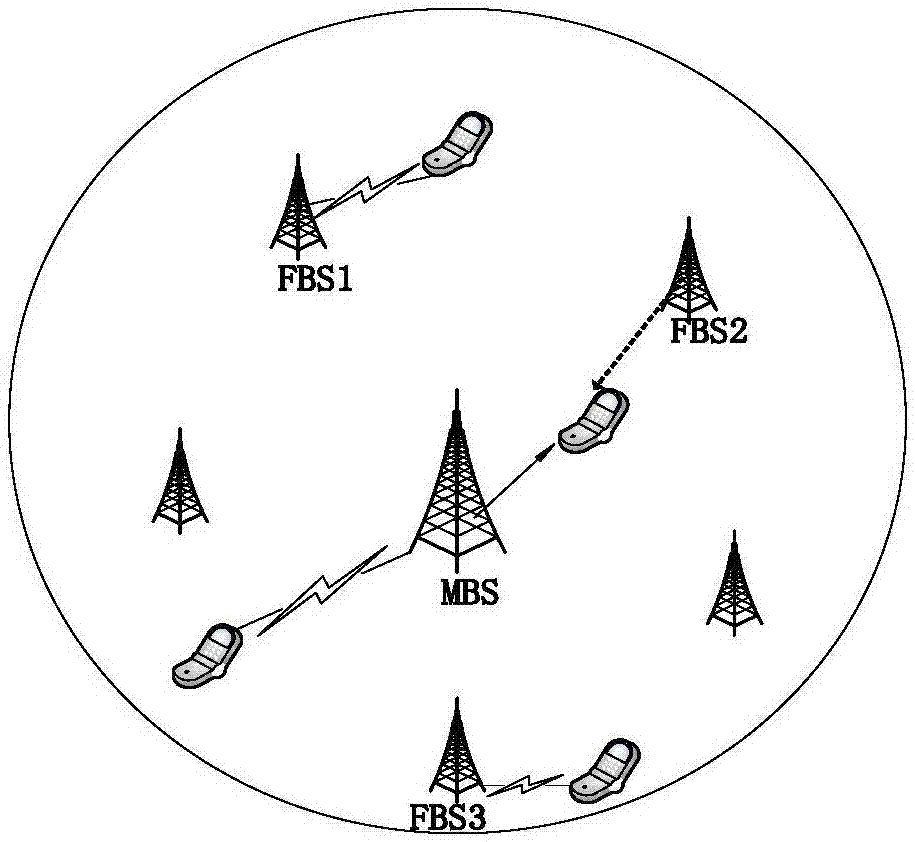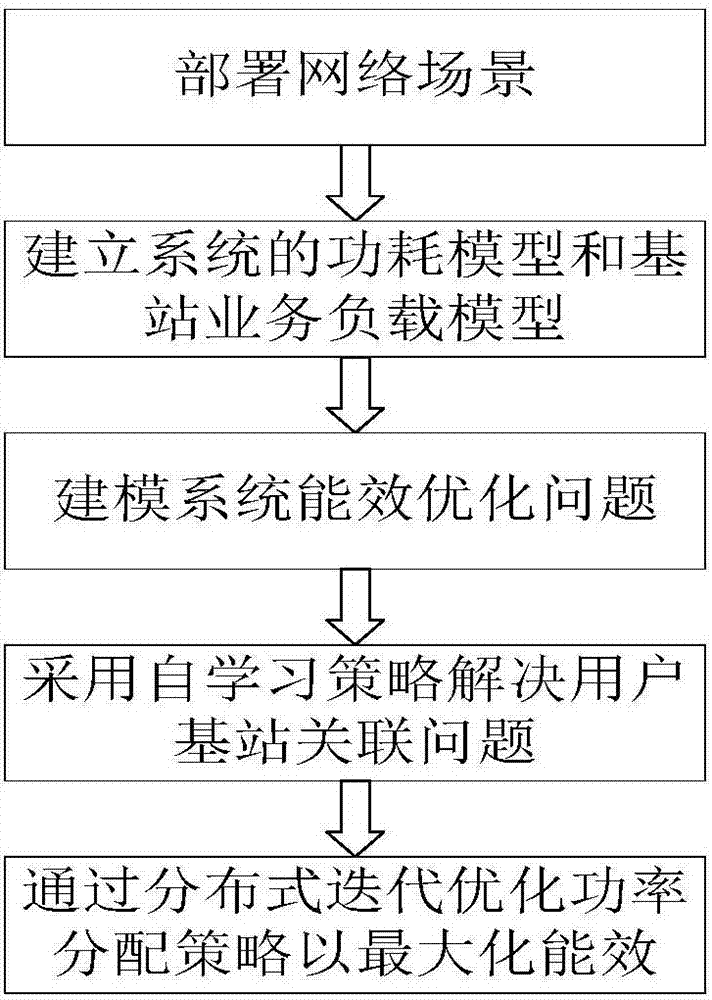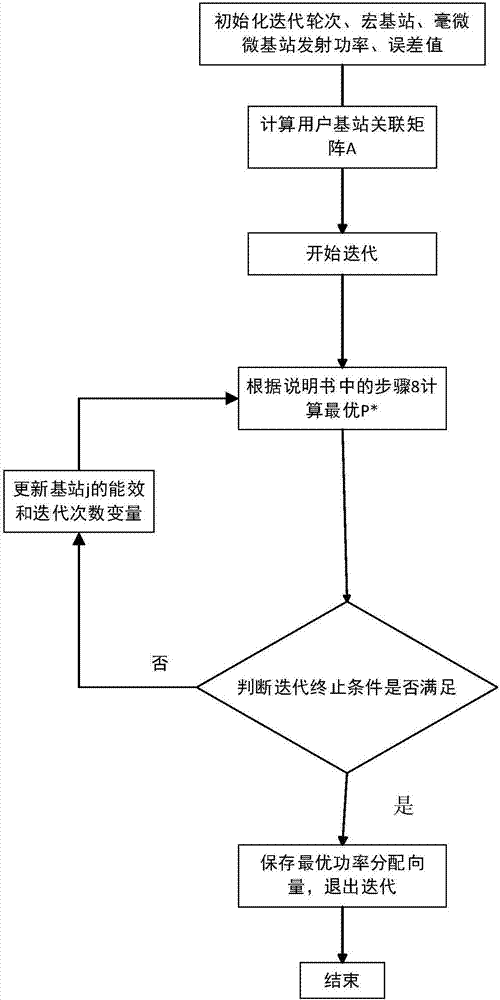Energy efficiency-oriented distributed resource allocation method and device in wireless heterogeneous network
A wireless heterogeneous network and wireless resource technology, applied in the field of energy efficiency-oriented distributed resource allocation
- Summary
- Abstract
- Description
- Claims
- Application Information
AI Technical Summary
Problems solved by technology
Method used
Image
Examples
Embodiment 1
[0093] This implementation case provides a learning-based distributed resource allocation method in a wireless heterogeneous network, which specifically includes the following steps:
[0094] Step 1: Build a two-layer wireless heterogeneous network, including macro base stations and femto base stations uniformly distributed within the coverage of macro base stations. Users in the network are randomly distributed, and all users share network spectrum resources. Without loss of generality, it is assumed that all base stations and Each user is configured with a single antenna, and the sets of macro base stations and femto base stations use with Indicates that the set of all base stations is represented by said, among them A collection of all users with express;
[0095] Step 2: Consider the network downlink transmission process, analyze and model any base station in the network business load model and power consumption model, and then propose a network energy efficienc...
Embodiment 2
[0138] Based on the above resource allocation method, this embodiment provides an energy efficiency-oriented distributed wireless resource allocation device in a wireless heterogeneous network, characterized in that the wireless heterogeneous network includes a central macro base station and a plurality of evenly distributed Femto base stations, users in the network are randomly distributed, and all users share network spectrum resources; the device includes a memory, a processor, and a computer program stored in the memory and operable on the processor, wherein the processor executes The following steps are carried out during said procedure:
[0139] Analyze the power consumption of each base station in the network, establish a power consumption model and a base station business load model, and then build a network energy efficiency model; model the optimization problem of maximizing network energy efficiency;
[0140] To solve the optimization problem of maximizing network e...
PUM
 Login to View More
Login to View More Abstract
Description
Claims
Application Information
 Login to View More
Login to View More - R&D
- Intellectual Property
- Life Sciences
- Materials
- Tech Scout
- Unparalleled Data Quality
- Higher Quality Content
- 60% Fewer Hallucinations
Browse by: Latest US Patents, China's latest patents, Technical Efficacy Thesaurus, Application Domain, Technology Topic, Popular Technical Reports.
© 2025 PatSnap. All rights reserved.Legal|Privacy policy|Modern Slavery Act Transparency Statement|Sitemap|About US| Contact US: help@patsnap.com



